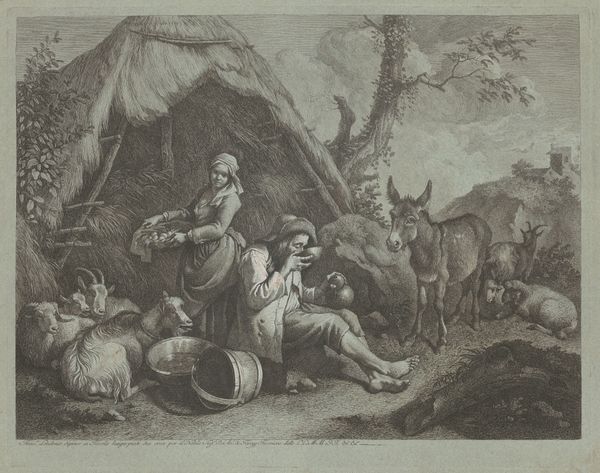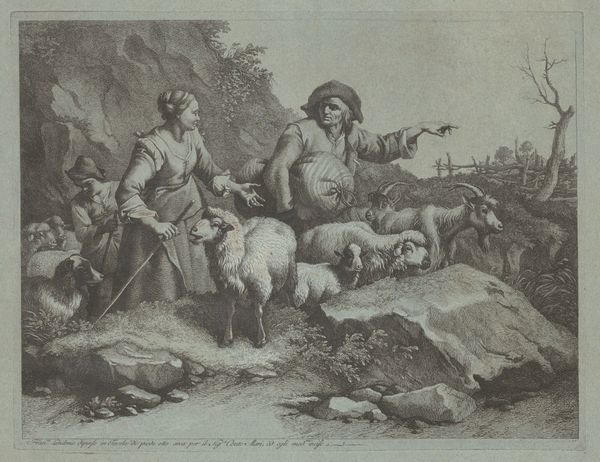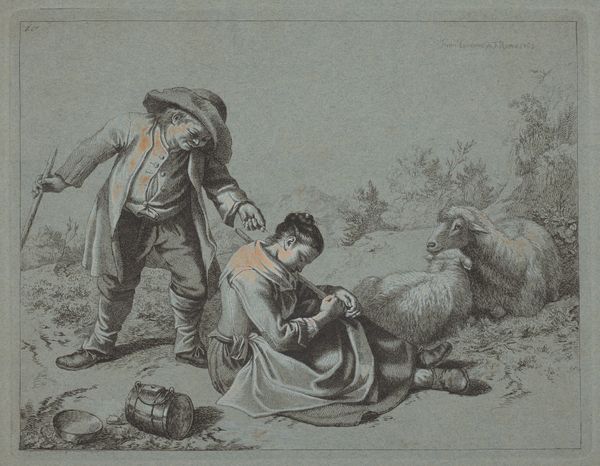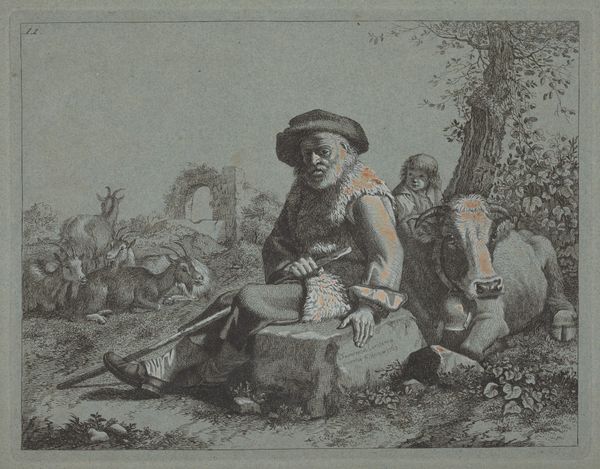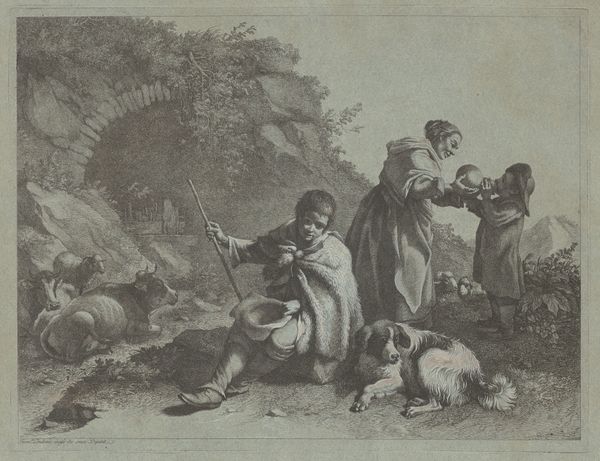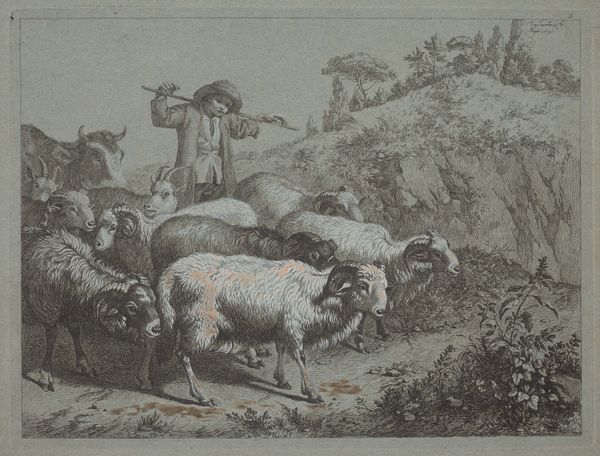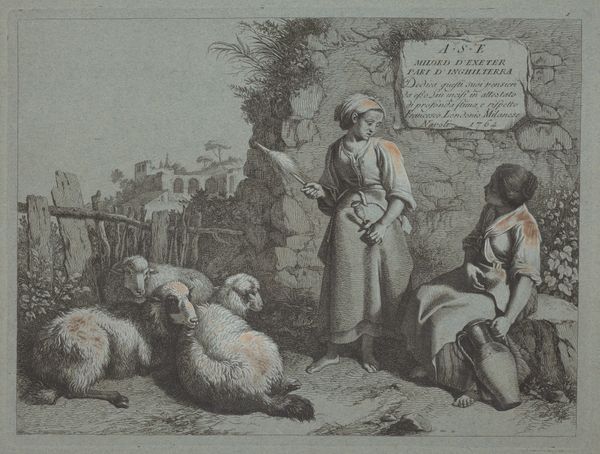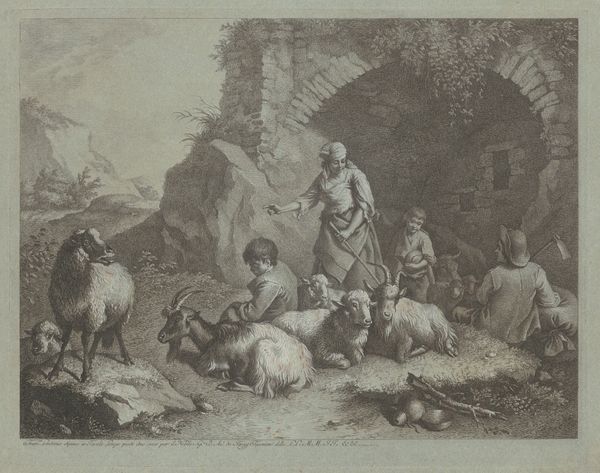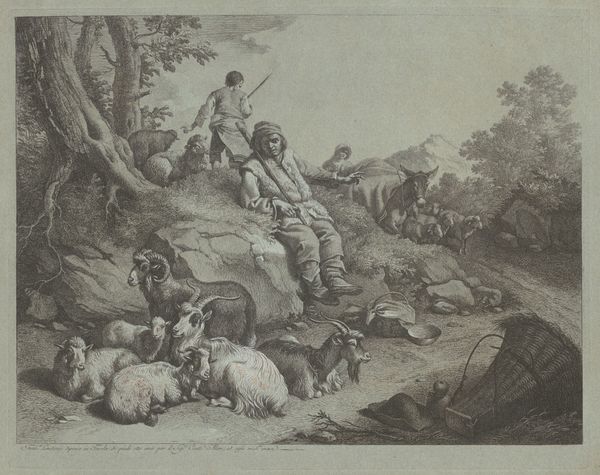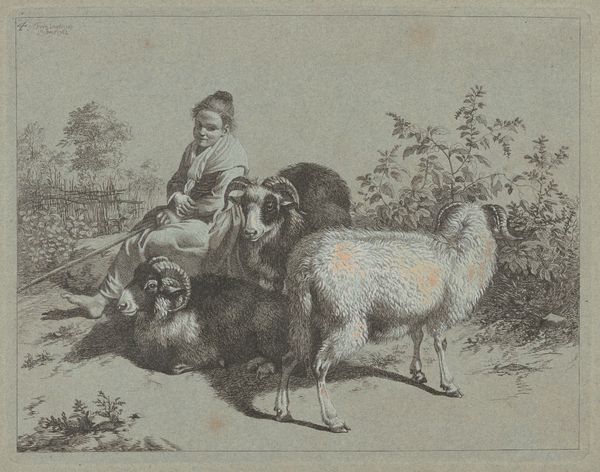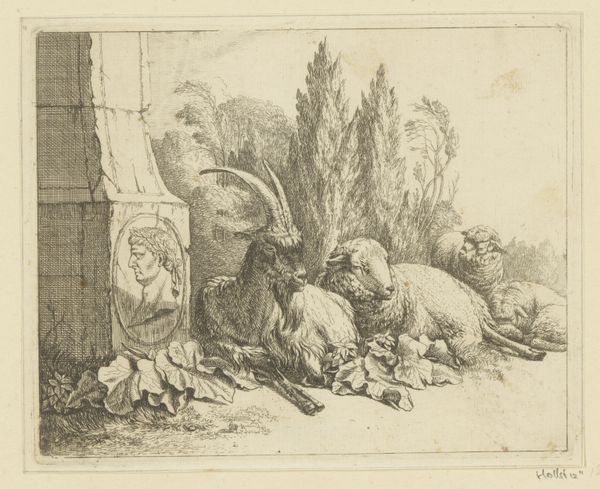
Dimensions: plate: 21.2 × 28.3 cm (8 3/8 × 11 1/8 in.) sheet: 28.5 × 41 cm (11 1/4 × 16 1/8 in.)
Copyright: National Gallery of Art: CC0 1.0
Editor: Here we have Francesco Londonio’s "Sleeping Peasant and Standing Spinner" from 1763, an etching that captures a seemingly ordinary rural scene. What strikes me is how staged it feels, almost like a pastoral play frozen in time. What do you make of this image? Curator: You’ve hit on something interesting there. Genre paintings like this weren’t simply reflections of reality; they were actively constructing ideas about rural life, about "the peasant". How does Londonio want us to *imagine* rurality, and *for whom*? It is pastoral, but what sociopolitical narratives do you believe it supports? Editor: Hmm, it feels a bit romanticized, maybe even naive. The peasant sleeping peacefully, the spinner dutifully working…It doesn't show the hardships. It feels a bit like propaganda, reinforcing existing power structures perhaps? Curator: Exactly. This image isn’t neutral; it's working within a very specific historical and political context. The elites often controlled narratives about the lower classes, presenting them either as noble or as inherently needing guidance. How might this representation, which avoids displaying physical hardship, influence how people of the time viewed those outside their own social class? Editor: I guess it creates a distance, a sense that the wealthy are viewing an idealized performance of peasant life, rather than understanding real people. Curator: Precisely! By looking at how social classes are portrayed and what those representations *do*, we can uncover so much about the power dynamics of the era. It goes beyond appreciating the artistic style; we see art actively shaping social perceptions. Editor: That makes a lot of sense. I initially saw a quaint scene, but now I realize there's a whole political landscape embedded within the image itself. Curator: Absolutely! The public role of art extends to actively reinforcing and sometimes challenging political ideas. This artwork and others remind us to consider that art is more than merely aesthetics or the beautiful rendering of things; it can be involved in cultural debates about social justice.
Comments
No comments
Be the first to comment and join the conversation on the ultimate creative platform.
